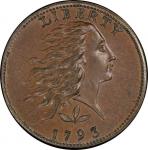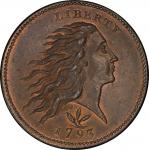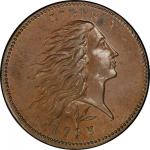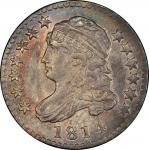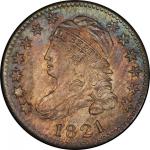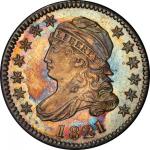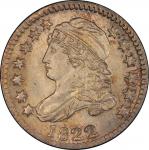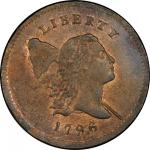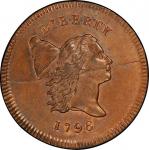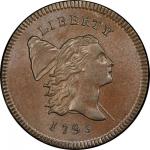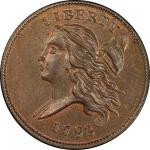“The American cents (says a letter from Newark) do not answer our expectation. The chain on the reverse is but a bad omen for liberty, and liberty herself appears to be in a fright – May she not justly cry out in the worlds of the Apostle, ‘Alexander the copper smith hath done me much harm, the Lord reward him according to his works’” — The Pennsylvania Gazette, March 20, 1793 The concept of ordinality is defined by the notion that every sequence of two or more items begins with the first. Just as evidently, just as basically, the sequence of American cents begins with Sheldon-1, the Chain AMERI. of 1793. History is especially fond of firsts. We honor George Washington above all other presidents, Lewis and Clark above all other explorers to the West, and the Wright brothers above all other aviators. The Chain AMERI. is the numismatic cognate: the first American cent, the beginning of the longest series in American coinage, the most basic building block of our now mighty monetary system. While pattern issues were struck in 1792 in trivial quantities, the Sheldon-1 Chain cent was the first to push across the frontier of the Mint’s doorstep and explore the trials of circulation. Most did their job exceedingly well, leaving precious few in high grade today. This example’s august provenance extends over 140 years into the golden age of American large cent collecting, cherished even then as an historic rarity. Its surfaces retain exemplary luster, more than might be expected at this grade level, with intact obverse cartwheel and a wealth of lively frost across the reverse. Both sides are superbly toned a dark steel brown, encompassing deep chocolate and lighter golden highlights. The reverse still shows lighter areas where mint color was last to fade, embracing the design elements and legends in a corona of pale olive. The strike is strong, though examples of this variety never show complete detail above Liberty’s ear. That region here shows some modest softness, but Liberty’s profile and other design elements are crisp. The surfaces are hard and smooth, showing just a single pre-striking planchet flaw under ST of STATES. Despite this, the planchet is well made, a testament to the care with which these initial cents were produced. A short abrasion is seen just inside the obverse rim right of the right side of Y in LIBERTY, and a similar abrasion affects the rim below 1 of the date. A few minor marks have gathered, including a diagonal nick behind Liberty’s eye, a thin nearly vertical hairline in the left obverse field, and a dull nick below the base of E in CENT. A thin raised line, a misplaced graver stroke, extends from right of the base of that E to the space between the top two horizontal strokes of that letter. While occasionally present on high grade specimens, it does not seem to have been described in the literature. In lower grades, it wears away, leaving only a few high grade specimens on which it may be seen. The die state is advanced, with the vestiges of two clashings most visible as incuse chain links below Liberty’s bust. A localized depression on the die face, manifesting as swelling on the coin, is seen above U of UNITED. While the die is not yet cracked atop TATE of STATES, an extremely thin crack may be seen going into the left top of the first T and leaving the right top, an indication of things to come. This state would fall between Breen’s state IV and V. The bulge above U in UNITED may be seen as early as Breen’s die state III and should not be mistaken for a rim issue. The historical keystone in any American cent collection, the Chain AMERI. cent of 1793 represents a sea change in American monetary history. It was the first large scale production of the United States Mint in any metal. While 1792 half dismes are now generally thought to have been struck for circulation rather than serving exclusively as patterns, their initial mintage was a paltry 1,500 pieces, all coined outside the Mint. Some evidence suggests another, smaller production run was coined inside the Mint later in 1792, but even the most aggressive mintage estimate for the half dismes is dwarfed by that of the Chain cent. More than 36,000 Chain cents were coined, of which Breen suggests about 6,350 were this variety, though pinpointing mintage figures for individual die marriages based upon delivery data and survivorship estimates is tricky at best and utter guesswork at worst. The Chain design was first struck at the Philadelphia Mint in late February 1793. By April of that year, the design had been changed entirely, yielding to a more elegant depiction of Liberty on the obverse and a wreath on the reverse. The reason for this quick change is not known, but complaints like the one that appeared in Philadelphia newspapers in late March could not have helped. The notices spread quickly throughout the Northeast after their first publication on March 19, 1793, complaining that “the chain on the reverse is but a bad omen for liberty, and liberty herself appears to be in a fright.” Blame was laid at the feet of “Alexander the coppersmith,” a reference to Secretary of the Treasury Alexander Hamilton. Hamilton was not a man who handled criticism particularly well, especially when the appropriate target of the criticism was an institution overseen by his rival at the State Department, Thomas Jefferson. The March 1793 Chain cent quote was first published numismatically in 1859, appearing in Historical Magazine in February of that year. Modern scholars don’t know who first found a Chain AMERI. and determined that it was a distinct variety from other Chain cents, but we do know collectors have placed a high value on the first American cents for a very long time. James Morris, a storekeeper in Morgantown, Pennsylvania, kept a diary from 1837 to 1844 that is now secured at the Berks County Historical Society. He recorded in 1841 that he had assembled “a collection of cents beginning at 1793 and from thence to 1841 inclusive excepting only those of 1804 and 1815,” the latter of which Morris had no way of knowing didn’t exist. The first auction appearance of a Chain cent known to modern numismatists occurred exactly a decade later, at the 1851 Lewis Roper sale, where collector Ammi Brown took home an Uncirculated Chain cent of an unknown variety for a dime; it was described in the most basic of terms, “Cent, 1793.” In 1869, Brown bragged about his purchase in the pages of American Journal of Numismatics and confirmed that it was a Chain cent: “It was as fine as when struck, and probably had never been circulated. At that time but little interest was felt in American coinage, and this piece was knocked down to me for my first bid of ten cents.” The AMERI. variety was seemingly recognized by 1855, when John W. Kline’s sale of June 12-13 offered, as lot 73, “Cent, 1793 different dies, p[ieces]. 4.” The lot hammered for 80 cents. We can speculate that the four varieties were the four principal types recognized by modern collectors: the Chain Ameri, the Chain AMERICA, the Wreath, and the Liberty Cap. Numismatic historian Joel J. Orosz, who has written extensively about numismatic auctions in the 1850s, suggests that lot 173 of the Pierre (sometimes anglicized as “Peter”) Flandin sale of June 6, 1855, represents the first published reference to a Chain cent. The lot was described as “Two 1793 cents, one with 15 links of a chain; and a cent of 1795, equal to a proof, very rare 3 pieces.” The first definitive reference yet located to a Chain AMERI. appeared in the Boston Transcript newspaper on March 1, 1859. Signed “A.S.,” initials of the well-known collector Dr. Augustine Shurtleff, the two-column article was entitled “About Cents.” It described 11 different die varieties of 1793 cents, along with bon mots about other dates in the series. Shurtleff’s first variety was described as: Obverse, a head with fine flowing hair, copied from the French ideal of Liberty; beneath, the date, with figures wide apart; above, the word ‘Liberty.’ Reverse, an endless chain of fifteen links, enclosing the words ‘one cent’ and the fraction 1-100. Around it ‘United States of Ameri.’ Edge divided into alternate sections of leaf work and milling. When Sylvester Crosby described the varieties of 1793 cents in 1897, assigning numbers that would remain in use until well after Dr. Sheldon penned Early American Cents, his description would not be significantly different. Between Shurtleff and Crosby, cent collecting would remain the focus of all American numismatics, and the Chain AMERI. would become the most famous and important variety of all American cents. In April 1884, Patterson DuBois, a Mint assayer and keeper of the Mint Cabinet, wrote in the American Journal of Numismatics: “It will hardly be deemed extravagant in the Mint to pay eighty-four dollars for a beautiful specimen of the Ameri cent.” Demand for this variety, as well as price levels, have only grown in the intervening century. This is one of very few Mint State Chain AMERI. cents known. PCGS has assigned a grade of 60 or above to only three specimens of this variety, one of which has been deemed a Specimen. The Condition Census listings compiled by Del Bland and William Noyes have both ranked this piece as tied for third finest known, though those listings have had a tendency to change slightly over the years even as the coins have stayed the same. Other specimens of this calibre include the Halpern-Koshkarian-Holmes coin, graded AU-58 by PCGS and the Winsor-Bement-Clapp coin, impounded in the collection of the American Numismatic Society. PCGS# 35432.


